This paper provides a description of the essential elements involved in designing an aluminum 2-stroke connecting rod. We begin by describing what a connecting rod is, the historical issues associated with designing a 2-stroke connecting rod and why this rod is of relevance. The reader is introduced to the main components of designing a connecting rod from machining processes to new technologies available including material selection, lubrication considerations, coating advancements and material treatments. Additionally, throughout the paper you hear from experts in the field who lay down their opinions on whether this rod can be built and used with today’s advancements.
The Ups and Downs of Designing a 2-Stroke Connecting Rod
It was the championship race, a race that would bestow world title recognition and a million dollar payday to the winner. Rodney Steele was ready and had a secret weapon – a revolutionary MSV Racing aluminum alloy connecting rod that had been installed into his CR500R 2-stroke race bike. This innovative technology would allow his engine to rev more quickly, produce more power due to less reciprocating weight, as well as reduce vibration, slowing Steele’s fatigue as he raced.
The riders were poised on the starting line, revving their engines – “ braap braaaaapp!”
Steele felt confident in his abilities and with his machine. The green flag dropped and the race was on! Steele was able to get into the power band instantly, out-accelerating his foe to the first turn, taking the hole shot. The riders rounded the first corner and, again, he was able to out-accelerate the competition. As the race progressed he continued to increase his lead.
By the final lap of the race, Steele had a half-lap lead on his fellow racers. He crossed the finish line, raising his fist in victory. At the winner’s press conference, Steele thanked the federation, his trainers, sponsors, and most of all MSV Racing, for building his world dominating motorcycle.
Avid motorcycle fanatics, especially of 2-stroke motorcycles, are always looking for ways to customize, upgrade and enhance the performance of their bikes. Approximately 10 years ago, this writer wondered why no one was making aluminum connecting rods for full-size 2-stroke engines.
While researching the subject online and making inquiries to friends and acquaintances in the industry, the consensus was it could not be done at the time. As Ensign (2015) states, “the friction, the thermal expansion, and the rod end strength are the largest considerations…” Many years passed and knowledge became available about recent advancements in aluminum alloys, coatings, and metal treatment processes. This raised the old question: Can a person design an aluminum 2-stroke connecting rod that would work for a specified amount of time? Millar (2015) states, “coatings, alloys and cryogenic treatments are advancing rapidly, there is certainly a good chance that with these advanced processes it is achievable.” Ensign (2015) agrees, stating, “Yes, I think that material science is progressing daily, there are many very high-strength aluminum alloys readily available to the general public, as well as secondary material treatment options. It seems like some combination of modern materials, coatings, and/or finishes would result in a usable aluminum 2-stroke rod.” Because this knowledge is now available, the idea of creating this rod can now be brought to fruition.
What is a connecting rod? In an internal combustion piston engine, a connecting rod is the link that transfers the piston’s back-and-forth motion into a reciprocating motion at the crank. This rotating motion then transfers from the crank to the clutch and is then multiplied in the gear box. Finally, this motion moves out of the engine to the rear wheels via the chain and sprockets. Depending on the weight of the connecting rod, the way the engine reacts can be dramatically altered. Worbes (2015) states, “weight is obviously the biggest advantage to using an aluminum rod.” Millar (2015) believes, “engine performance characteristics would be the benefit of the Al rod. Lightening the bob weight would reduce the inertia and harmonic of the engine. The rod may also dampen detonation effect.” Ensign (2015) agrees and notes, “I think it would be reasonable to expect some throttle response improvements, as well as an increase in engine power due to lower reciprocating mass.” A lighter rod reduces reciprocating weight, allowing the engine to rev more quickly, and absorbing less horsepower to turn the crank assembly. This allows the engine to make more horsepower more quickly with no other changes.
Most connecting rods are made from case-hardened steel. In very high performance, high rpm applications, weight reduction is needed, so aluminum (Al), titanium (Ti), or metal matrix composite (MMC) are the go-to materials. Al is the preferred metal in many cases. It is strong plus lighter and far less expensive then Ti and MMC, plus much easier to machine. Al is 60% lighter then steel, 40% lighter then Ti, and 15% lighter than MMC. This huge weight savings greatly reduces the reciprocating weight, which can lead to a faster more efficient ride.
However, there are also issues with pure Al. It is considered a soft metal and cannot be used in most applications without other metals being added to it like cooper, magnesium and zinc, to name a few creating Al alloys. With Al alloys not being as strong as steel, generally more Al alloy is needed to make up the strength and special considerations taken when hardness is required. This still allows for a dramatically lighter rod, but takes up more space.
Most Al alloy connecting rods are made of 7075-T6511. This is a very durable Al alloy used in many transportation applications, from high performance cars, motorcycles and airplanes, to aerospace, where light weight and high strength are needed. When using Al alloy for connecting rods, special heat treating is needed to add strength, and inserts are usually installed to protect the Al where it attaches to the piston and crank. It is also common with Al alloy connecting rods to cryogenicaly treat the rod. This process brings the rod slowly down to minus 300 degrees Fahrenheit using liquid nitrogen for a specified amount of time, then slowly brought back to room temperature. This process aligns the Al molecules in a much tighter molecular framework, adding dramatically more strength and hardness. Roger (2015) states, “the cryogenic type of rod treatment that I do will make the coating, rod, & other parts stronger & improve the rod strength.”
For Rodney Steele’s Al rod, a newer type of Al alloy-7068-T6511-was used. This Al alloy is considerably stronger and harder than 7075-T651. Advertising by Kaiser Aluminum (2000) informs prospective users that, “documented industry data shows that 7068-T6511 has typical ultimate tensile strength of 103 ksi versus a similar product produced from 7075-T6511 that would have a typical ultimate tensile strength of 93 ksi.” And because 7068-T6511 needs less material for strength and durability, the rod is even smaller and lighter than a comparable 7075-T6511 rod would be. Steele’s rod was also cryogenicaly treated.
In order for 7068-T6511 to live as a 2-stroke connecting rod, it needs to have its bearing bores coated with Diamond Like Carbon (DLC). DLC is a carbon material that shows some of the characteristics of diamond. The main factors of DLC are hardness, slickness and wear resistance. Not all DLC coatings are the same and Steele’s Al alloy rod had a special version. Bikram (2015) explains that,” DLC’s (very hard coatings) in general are not good for soft substrate like Al, The special DLC from Richter was designed to minimize the internal stresses and improve the adhesion to the substrates like AL.”
Al alloy connecting rods have been used for many years in 4-stroke applications. Steele’s race bike was the first time it was used successfully in a 2-stroke racing application. This new Al 2-stroke rod design has the ability to greatly enhance the performance of any 2-stroke applications including, but not limited to Supermoto, Motocross, Sand Drags, Ice Racing, Circle Track, Karting, and Snowmobile Racing.
There are many hurdles to overcome when designing a 2-stroke Al connecting rod. First, it is necessary to understand how a 2-stroke engine oiling system works. A 2-stroke engine does not have engine oil in a pan that is forced through the engine with an oil pump like a 4-stroke engine. As Ensign (2015) notes, “the crankcase does not have a pressurized oil galley system.” A 2-stroke’s piston rings, cylinder bore, rod bearings, and crank bearings are all lubed by oil mixed in the fuel. Two Stroke Tuner’s Handbook (1973) provides information on improving rod bearing oiling stating, “…one can sometimes improve bearing reliability by opening slightly the oil channels at the ends of the connecting rod and chamfering the oil channel edges.”
A normal 2-stroke rod is made of case hardened steel and has needle bearings on the piston attachment end (wrist pin) and crank attachment end (crank pin). Millar (2015) states, “the material strength to support the needle style bearings within the aluminum may also pose a problem.” Steele’s connecting rod did away with these bearings using a special DLC coating on the rod’s bearing bores, wrist pin, and crank pin making the rod stronger and able to still deal with the 11,000 rpm his engine would see. 7068-T6511 had to be used because of its great strength and was hard enough after its cryogenic treatment to be the backing material to the extremely hard, but brittle DLC.
The next hurdle to consider is the building of the rod. Should it be cast, billet, or forged? With casting molten Al is poured into a mold, allowed to cool, and then machined to specification. This system works well for building a large amount of Al components on a budget. However, the drawback is they tend not to be as strong as forged or billet. Forged is when a piece of heated Al is pounded into the desired shape by a forge die which uses 100’s of 1000’s of pounds of force. This method creates very strong parts by keeping the Al grain structure intact, but is very expensive. Steele’s rod is billet. The billet Al rod was machined from one solid block of 7068-T6511. This process allows for extremely precise and detailed machining.
Another hurdle to creating an Al 2-stroke connecting rod is the lack of room for the rod in the engine. Ensign (2015) explains,” the very tightly confined space could prove to be an issue.” In a 2-stroke engine, the space between the bottom of the connecting rod and the engine case at bottom dead center (BDC), (where the piston is farthest from the spark plug) is only a few millimeters. This is another reason that it is very difficult to use Al and is the main reason for removing the needle bearings. This allows for the rod’s bearing bores to be made smaller allowing for more Al material to be added increasing strength.
Last but not least is Al rod growth. Maley (2015) states, “expansion rates will be a huge problem.” As the Al alloy heats up it expands much more than steel. Great consideration is taken to ensure the rod to piston pin, rod to crank pin and overall rod length clearance is sufficient to not create an out-of-specification fit, and piston does not come too close to the cylinder head. An advantage of the 2-stroke is the rod will not get as hot as a 4-stroke because it is not touching hot engine oil and it is cooled by the fresh air/fuel mixture that occurs with every other piston stroke.
The calculated rate for Al 7068-T6511 thermal expansion, to find the overall rod growth in length is 0.000014 inch (Al thermal expansion) / inch (rod length center to center) F.(rod average temp). Typically this calculation uses 200*F for a 4-stroke rod was to be calculated, but for a 2-stroke 160*F is used. That means for Steele’s rod calculation .000014” x 5.67”x 160*F = .012” of overall rod growth. This was further verified by putting Steele’s AL alloy rod in an oven at 160*F for 1 hour and taking measurements of overall rod length and the growth of the bearing bores. This allowed MSV Racing to closely calculate and design the rod to work at its best, ensuring long life and maximum performance. Worbes (2015) also notes, “…I think aluminum is again an advantage because it dissipates heat faster. I don’t think it will see the high temperatures as a 4 stoke motor.”
The design and building of Steele’s MSV Racing Al connecting rod was done in Solid Works, a modeling and computer aided drafting (CAD) program that allows the rod to be built and tested via simulation software. With simulation software called Finite Element Analysis (FEA), programmed stresses can be put on the virtual rod, and the computer runs simulations to find the weak points. This allows the rod to be designed and tested before it is machined and installed in the engine, greatly reducing the chance of failure. Ensign (2015) gives insight into his process of designing a rod stating, “I would spend a great deal of time working out whatever design results give the strongest design at the crankshaft end of the rod.”
Rodney Steel’s win with the innovative MSV Racing 2-stroke Al alloy connecting rod proved it is possible to add unbeatable performance to a 2-stroke engine. Patents will be filed, marketing will be explored, and MSV Racing will sell this product to the masses creating a multi-million dollar business. With all the hurdles associated with building the full-size 2-stroke Al alloy connecting rod in this manner, it is possible that with new advancement in technology, this new connecting rod will come to fruition.
References
- Ensign, J. (2015, July 29). The Ups and Downs of Designing an Aluminum 2-Stroke Connecting Rod [E-mail interview].
Jacob Ensign, owner of Rogue Energies, is a mechanical engineer, machinist, machine shop owner and R&D specialist. He was on Oregon Institutes of Technologies Formula SAE team and was captain of the engine team. Ensign designs and builds just about anything from specialty motorcycle parts including custom road racing wheels, swing arms and specialized cooling systems to weighted and lightened billet clutch baskets and flywheels, not to mention electric motorcycles and ATVs. He is also involved in motorsports designing and building many custom parts including billet rocker arms for highly specialized racing engines to building hybrid diesel vehicles. - Jennings, G. (1973). The Crank Train. In Two-Stroke Tuner’s Handbook (1st ed., Vol. 1, p. 29). Tucson, Arizona: H.P. Books.
This book by world renowned 2-stroke guru Gordon Jennings is the definitive bible for anyone wanting to learn about as well as how to tune their 2-stroke for maximum performance. It was written in 1973, but much of the information is very relevant today.
Kaiser Aluminum. (2000). High Strength and Light Weight Alloy 7068. Headquartered in Foothill Ranch, California, Kaiser has 12 fabricating facilities in North America, more than 2,000 employees, ships more than 500 million pounds of product annually, and had over $1.3 billion in revenue in 2012. - Kamboj, B. (2015, July 28). The Ups and Downs of Designing a 2-Stroke Aluminum Connecting Rod [E-mail interview].
- Bikram Kimboj, P.Eng is Vice President of Operations (Richter Precision Inc.). Richter Precision started in 1978 and is an industry leader in Chemical Vapor Deposition (CVD) and Physical Vapor Deposition (PVD) coatings. Richter has many specialty DLC coatings available and is the only DLC coating company with a DLC coating that can be used successfully on Aluminum bearing bores.
- Maley, J. (2015, July 28). The Ups and Downs of Designing an Aluminum 2-Stroke Connecting Rod [E-mail interview].
- Justin Maley has a number of State and National Motorcycle Championships over many different disciplines, and more than 14 years as a professional racer. Maley gained the experience to test motorcycles and engines at the highest level for many OEM and aftermarket companies. In the past he has worked with OEMs such as KTM NA and KTM Sport Motorcycle AG, HRC in Europe, Yamaha Motor Co, American Suzuki and Suzuki Canada as well as Aftermarket companies like Akrapovic in Slovenia, Rocket Exhaust, Race Tech, Tric Carbon and Bell Helmets. Maley also worked with MTV and Discovery Channel on various programs and built contraptions for Nitro Circus and Nitro Circus Live. He has spent many years building and tuning engines for some of the best race teams in the world. Maley is currently the Director of Product Development for American Motorsports Company (A.R.M.) and owner of Maley Motorsports.
- Millar, A. (2015, July 28). The Ups and Downs of Designing a 2-Stroke Aluminum Connecting Rod [E-mail interview].
- Adam Millar, of Millar Auto Machine Company, grew up around race engines, specifically tractor pullers. Many of the engines were blown big block Chevrolets. The family business had done work directly with manufacturers of the engine components which had made huge gains in power and durability which means a substantial amount of research and development. Being involved not only hands on with parts, but talking theory with his dad and others involved, he gained a great understanding of what works. Through his powersports service work and involvement in 2-stroke engine development rapidly increasing, customers come to him after having been beaten by or having witnessed his engines in use. Adam has done Honda CR500 based engines for racing top speed at the salt flats, the beach drags in Australia, Timbersled conversion bikes in Canada and the USA, supermoto, MX, hillclimb, drag racing, woods racing and countless other customers worldwide.
- Schiradelly, R. (2015, July 28). The Ups and Downs of Designing a 2-Stroke Aluminum Connecting Rod [E-mail interview].
- Roger Schiradelly of Controlled Thermal Processing, Inc., is a specialist in racing technology, with more than forty-five year’s experience in racing. He has many racing innovations to his credit and more than 20 year’s experience of cryogenic processing. He has built and designed many supercharged aluminum rod engines ( top fuel), and has also worked with small race engines, 2-and 4-stroke engines with several different types of aluminum and steel rods. He is also a certified tool and die maker.
- Worbes, M. (2015, July 27). The Ups and Downs of Designing a 2-Stroke Aluminum Connecting Rod [E-mail interview].
Matt Worbes, owner of M-Tech, has many years in the powersports field and yields an impressive resume. It is easy to see why Worbes was consulted for this paper. He was involved in many top racing teams including as a factory Yamaha race mechanic; Research and Development two-stroke and suspension tech; Pro-Tec Performance Products, 1992-1996 Mechanic for Chris MacCluggage, Watercraft Racing with multiple wins; factory Kawasaki race mechanic, 1999 for Doug Chandler with three wins and second in AMA championship; Crew Chief for Eric Bostrom (Kawasaki Factory Team) 2001, 2002 multiple wins and podiums, second place title AMA 750SB, First place title 600SS and many World Superbike Rounds; research and development director for Muzzy’s NHRA drag bike program; Research and Development tech for Proton Team KR V5 four-stroke MotoGP engine development; consultant for Rockwall Honda Race Team 2008 in Electronics and Engines with Aaron Gobert, getting top ten finishes in AMA Formula Extreme, and 600 Supersport. Matt built the engine for the 2008 Honda CBR 1000 ridden by Leslie Porterfield. Porterfield’s Honda CBR 1000 set a new world record for the fastest production motorcycle.

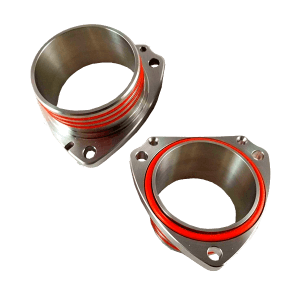
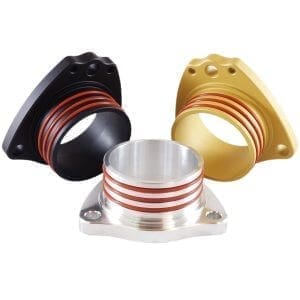
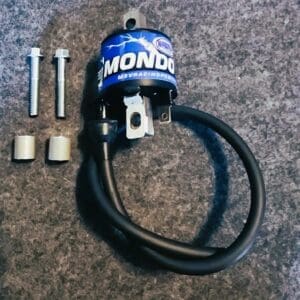

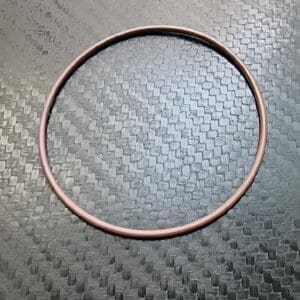
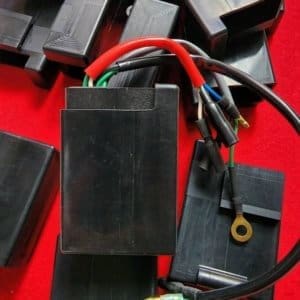

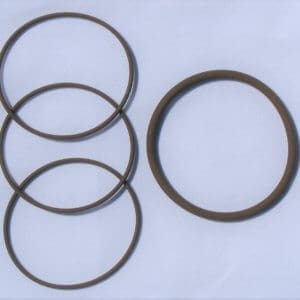

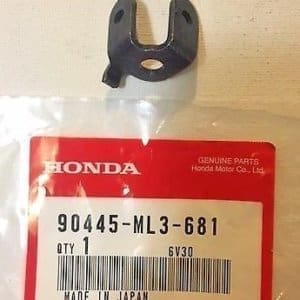
Reader Interactions